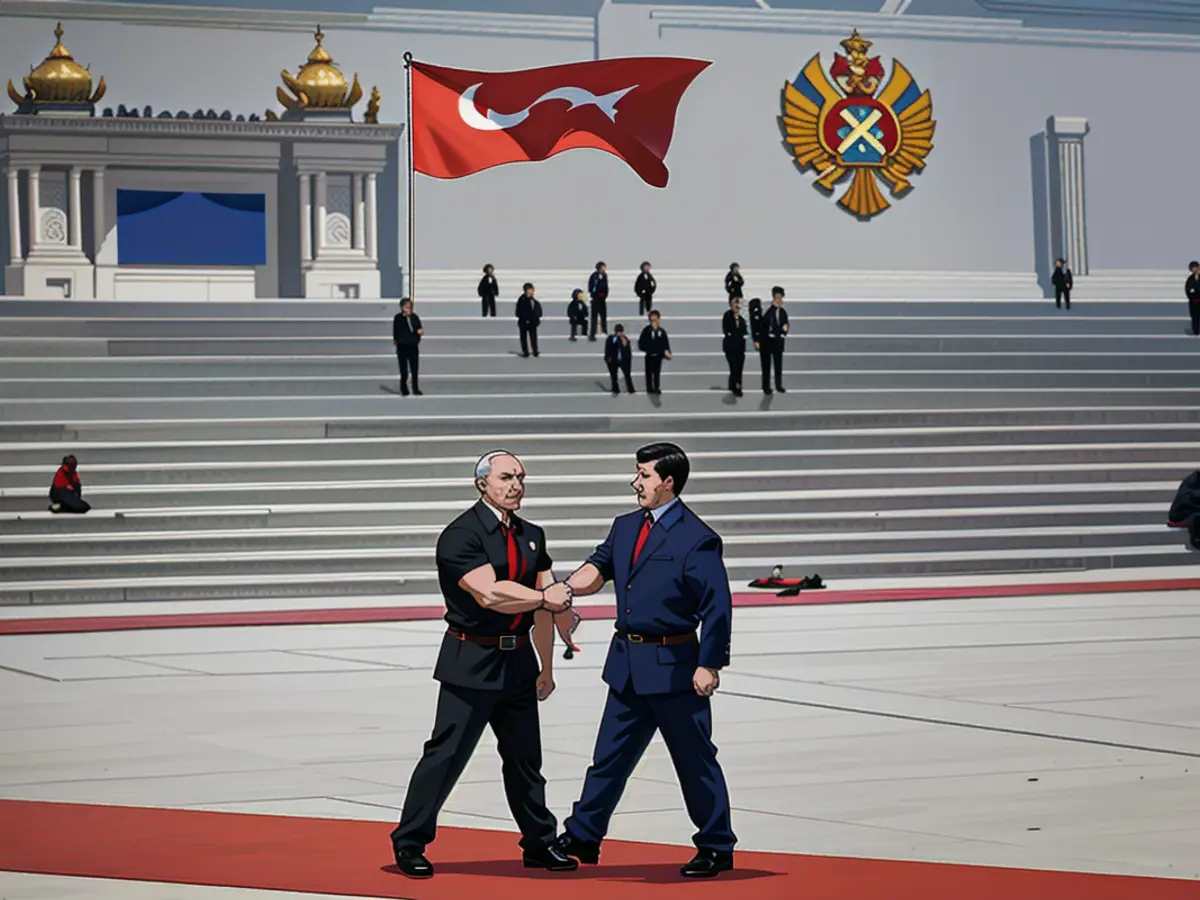Space Race Redux: Russia and China's Aggressive Pursuit of Offensive Space Capabilities
Getting Ready for a Cosmic Fight
Defense Department closely tracking space military exercises conducted by Russia and China.
The US military is warning about a sinister new arms race, this time in the great beyond. Top officials believe Russia and China are weaponizing space, as evidenced by their recent satellite training missions.
Russia, for instance, has been sharpening its space forces by practicing attack and defend tactics. Last week, we watched as a group of their satellites huddled together, strategically surrounding and isolating another one in low-Earth orbit, potentially preparation for a future conflict. Their ambition remains the same: to put a nuclear weapon in space. These aggressive moves hint at their active preparation for an armed conflict in space, US officials revealed.
It's not just words - last year, CNN reported on Russia's ambitious project to create a space-based nuclear weapon. They're also no strangers to anti-satellite missile testing, as demonstrated by the 2021 incident that left a massive debris field in space, forcing the astronauts on the International Space Station to scramble for safety.
China hasn't held back either, replicating similar exercises over the past year. In December, they showcased their advanced capabilities by parading multiple satellites in tight formation, a move that raised concerns about potential military applications. The US Space Force official put it bluntly: "They practiced attack approaches... those are advanced patrols and advanced tactics."
China's arsenal includes co-orbital satellites that can either physically hit or disable other satellites, just one in a suite of advanced technologies they're developing. They're also working on anti-satellite missiles and directed-energy attacks that use lasers to attack other satellites, all part of their mission to seize the ultimate high ground from the US.
The US still holds the advantage in space, but both Russia and China are developing new systems to enhance their military effectiveness. The US Space Force is focused on building its own offensive and defensive space capabilities to safeguard against these emerging threats. After all, mobility can lead to breakout, just like how the Germans took away the mobility of enemy tanks during World War II.
It's not just about defense anymore. The US needs to be ready to do more than protect and defend in outer space. "Stories about playing defense are stories about losing," the defense official said.
Looking Back to Move Forward

Russia and China's space ambitions have been a source of concern for quite some time. They've been developing anti-satellite missiles, including nuclear capabilities, and are involved in cyberattacks on US satellite infrastructure, posing a significant threat to space security.
China, on the other hand, has been rapidly improving its space capabilities, with over 400 satellite launches since 2022. Many of these are designed for military applications, such as intelligence gathering and satellite jamming. Some are even capable of physically attacking or disabling US assets in space. China is also advancing its capabilities in space-based weapons, including hunter-killer satellites and even testing for a permanent presence on the Moon.
The US, Russia, and China are all signatories to the 1967 Outer Space Treaty, which bans weapons of mass destruction in space. However, concerns about an outer space arms race are growing, making the treaty increasingly seem like a thing of the past. In fact, Russia vetoed a UN Security Council resolution last April that would have reaffirmed the opposition to nuclear weapons in outer space.
In recent years, China has been improving its capabilities to track and target US military forces, with over 1,060 satellites in orbit as of December 2024, making it the second largest satellite fleet in the world, second only to the United States.
China expects space to play an important role in future conflicts, enabling long-range precision strikes, according to the latest threat assessments. In December 2024, they launched a remote sensing satellite that Space Force military officials say could allow them to persistently monitor US and allied forces in the Pacific region.
China appears to see counterspace operations as a means to deter and counter US military intervention in a regional conflict. They stress the necessity of 'destroying, damaging, and interfering with the enemy's reconnaissance... and communications satellites' to 'blind and deafen the enemy.'
Predictably, China performed 66 successful space launches in 2024, placing 67 intelligence, surveillance, and reconnaissance (ISR) capable satellites into orbit, according to US Space Force Intelligence Headquarters.
The US must increase its space defense budget and develop countermeasures to address these growing threats. Trump had a head start with the creation of the US Space Force during his first term, but increasing competition from Russia and China still poses a national security threat. "US needs to be ready to do more than protect and defend in outer space. Stories about playing defense are stories about losing," the defense official said.
- The US Space Force is focusing on building offensive and defensive space capabilities to counteract Russia's and China's reliance on anti-satellite missiles, including nuclear capabilities, for their aggressive pursuit of offensive space capabilities.
- China's space ambitions, including their pursuit of co-orbital satellites and anti-satellite missiles, as well as their development of directed-energy attacks, are causing credit concerns for the US military, leading to the need for increased space defense budget and the development of countermeasures.
- Russia's aggressive moves, such as isolating satellites in low-Earth orbit for potential future conflict preparation and their ambition to put a nuclear weapon in space, are prompting the US to assess its own space capabilities and respond to the emerging threats in the space race redux between Russia, China, and the US.




